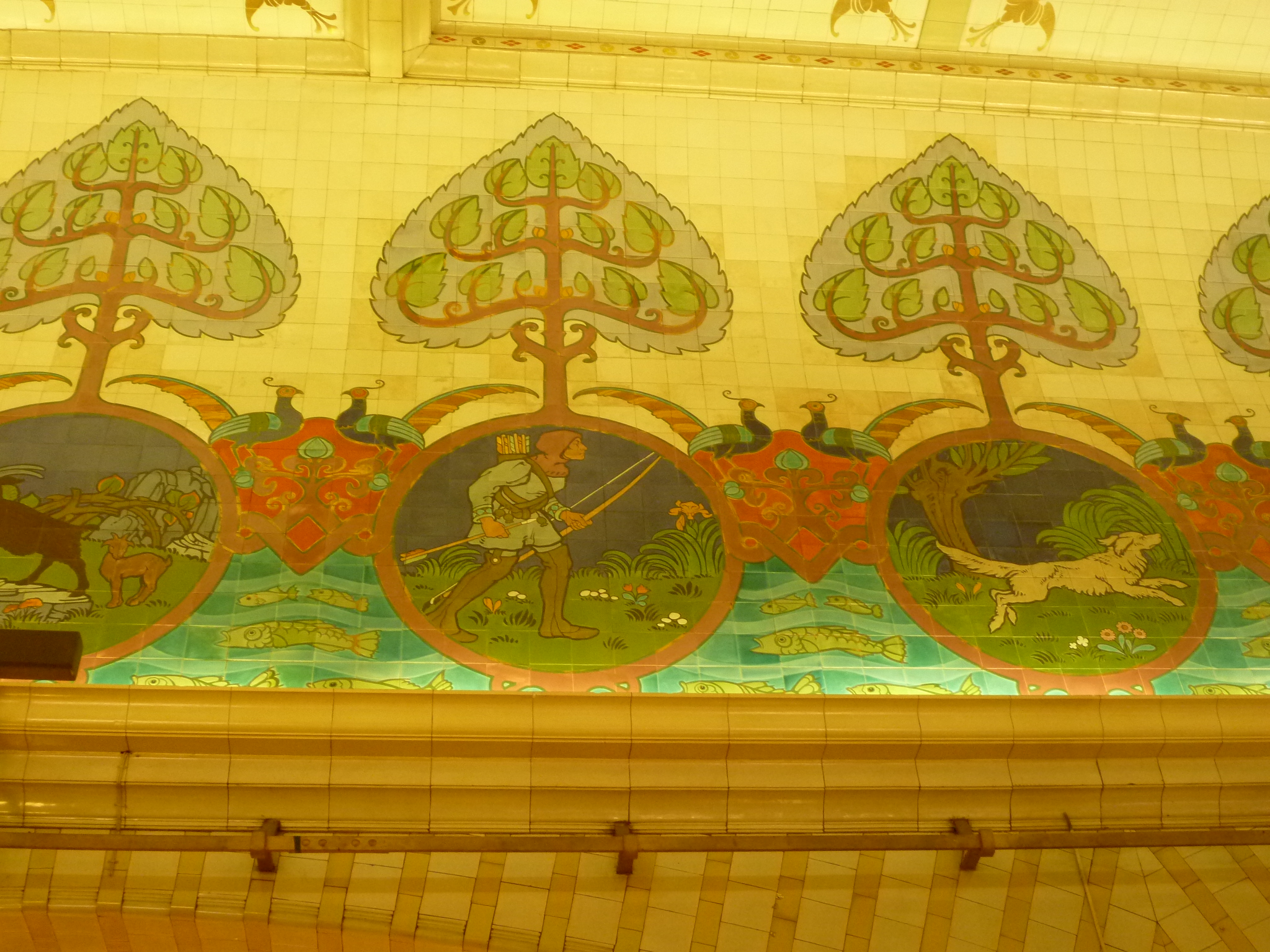
Wikimedia Commons
William James Neatby (24 May 1860 – 20 April 1910) frequently known as W.J.Neatby was an architect, ceramic designer and artist. He was born in Barnsley in Yorkshire and, after training as an architect, changed his career path in 1884 by joining Burmantofts PotteryMajor producer of decorated tiles and architectural ceramics in Yorkshire. in Leeds where he spent six productive years developing his expertise in ceramic painting, draughtsmanship, glazed tiles and murals for indoor and outdoor locations. He moved to Doultons in London in 1890 to take charge of the architectural department and remained there for eleven years. He used new ceramic materials and was involved in a number of major architectural projects.
After leaving Doultons he pursued his own interests, working with stained glass, metal and wood while continuing his relationship with the firm working on his own and the company’s projects.
Family
William James Neatby was born in May 1860 in Barnsley, Yorkshire into a relatively prosperous family who were non-conformists. Neatby was articled to an architect for six years when he left school aged 15, and visited churches at Woolley, Elland, Thornhill and York Minster, where he became interested in stained glass.[1]
Four days after his 21st birthday in May 1881, architect’s assistant, Neatby married Emily Arnold who was eight years his senior. Shortly afterwards Neatby left Barnsley and moved to Whitby and other places in Yorkshire for the next two years. Emily died in August 1885. Neatby, now describing himself as an artist, married Jane Isabella Dempster in October1887.[2] Their son, Edward Mossforth Neatby was born the following year. He also became an artist.[3]
Neatby died of a heart attack in London shortly before his 50th birthday. He is buried near his home in Hughenden Churchyard.[4]
Burmantofts
Aged 23 Neatby was engaged by the Burmantofts Pottery in Leeds as a ceramic tile designer.[1][5] His initials occur on an illustration, “A few Pilaster Panels in Burmantofts Faience by Wilcock and Co.” in a company catalogue from 1884. The drawing is one of more than sixty sheets of drawings, signed by him in several catalogues showing tiles and larger decorative pieces of architectural ceramics. He spent six years at Burmantofts as the artist of hand-painted specimens of art pottery, tile and catalogue designer while developing expertise in ceramic painting, draughtsmanship and designed glazed tiles, fireplaces and terracotta ornament in a detailed Renaissance style. He worked closely with clients designing glazed faience tile and terracotta pilastersDecorative architectural element used to give the appearance of a supporting column, to articulate an extent of wall., ceilings, doorways and wall panels for interiors and exteriors of private houses, banks, restaurants, hospitals and hotels.[2]
Doultons

Wikimedia Commons
In 1890 Neatby moved to London to take charge of the architectural department producing mural ceramics at Doulton and Company of Lambeth where he spent eleven years. He experimented with new ceramic materials and was involved in a number of major architectural projects.[2] His work for Doultons includes ornamental architectural terracotta details for 54–55 Cornhill in the City of London designed by Ernest Runtz in 1893,[2] and he was the principal sculptor for the terracotta bas relief panels for the New Physical Observatory at the Royal Observatory in Greenwich in 1895.[6] A year later he designed the large-scale decorative scheme for the interior of the Winter Gardens in Blackpool, lining the walls of an entrance corridor and the main ballroom with relief moulded work and hand-painted compositions.[7] On other buildings Neatby used Carraraware stoneware which has a dull eggshell surface and was produced in a several colours for exteriors and Parian ware, its earthenware equivalent, that he developed for interiors. They were used on the facade of the Everard Building in Bristol in 1901 and Harrods’ Meat Hall in 1902.[8]
When Neatby left Doultons to work for himself in 1901, he continued to work in collaboration with the company but took the opportunity to work in other media. He designed stained glass for domestic houses and churches and worked with metal, designing hinges, escutcheons and lock-plates, made lamps, caskets and enamelled jewellery.[9]
